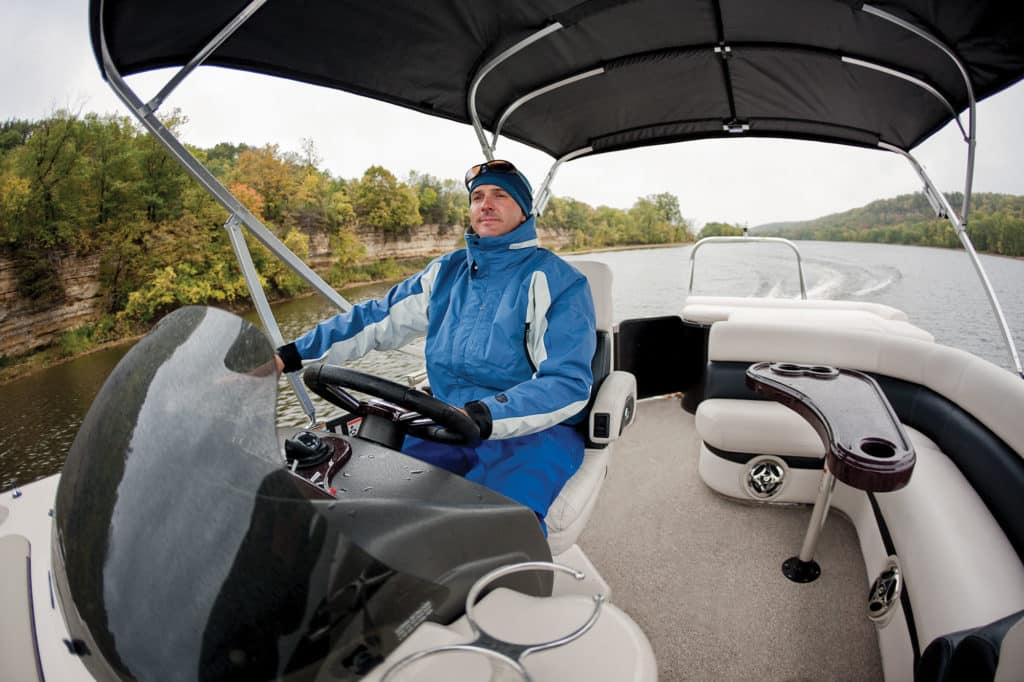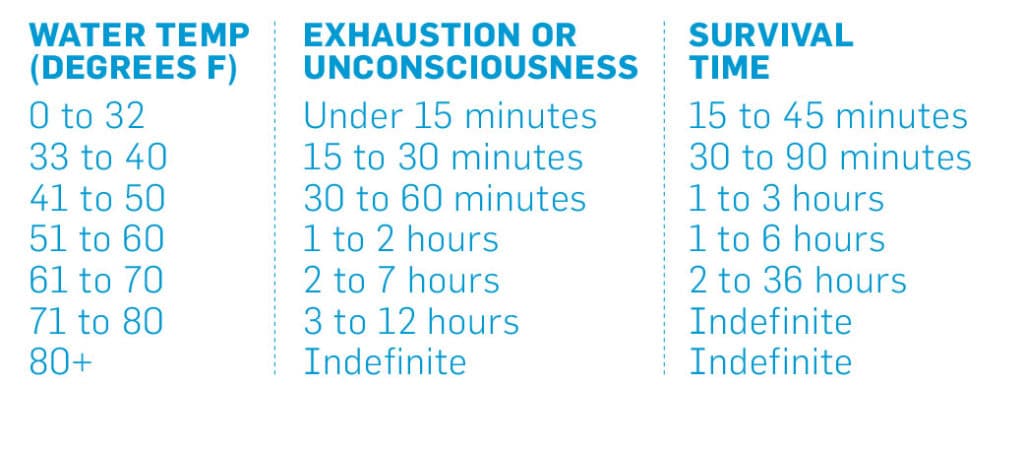
So, the ice has disappeared, if there was any, and the air temps are finally climbing well above freezing. Like the first robins returning for spring, this signals the die-hards among us that it is time to start boating.
Heading out on the margins of comfortable weather can reap its own rewards, provided you head into the cold prepared and in the know. Here are a few things to consider before you hook up the no-kill switch, crank the engines over, and shift into gear for the first time this year.
Dress for the Water
My kids play soccer on a field that is open to the wind and elements from all sides. The general rule is, dress them for temps that are 10 degrees cooler than the thermometer reading at the house. While there’s no hard-and-fast number, expect a similar situation—it will feel much colder on the water than it does by your house. The spring air warms up much faster than your local waters will, so even if you have air temperatures in the 60s, the water temperature could still be in the 30s, creating a chill in the air just above the surface. Add to that the wind chill you’ll experience when you boat above planing speeds. A 50-degree air temperature feels a lot different at 30 mph than it does when you’re standing still.
Jacket Up
While we advocate wearing life jackets any time you take to the water, we recognize that not everyone does in the steamy summer months. At this time of year, however, we say no excuses. Should you fall overboard, cold weather can affect your heart, lungs and muscles almost instantly. Wearing a life jacket will keep you afloat, even if the cold has rendered you incapacitated. Put it on and keep it on.
Leave Word
One of the joys of early-season boating is the lack of boat traffic. There can be days when you have the water entirely to yourself. The flip side is, should you break down or encounter an emergency, there might be no one else around to help you. So let people know where you’re going. File a float plan, or leave details as specific as you can with someone who will be expecting you. Include your time of departure, where you plan to cruise to, and your expected time of return. Include instructions such as: “If you don’t receive a call or text from me by X time, notify the authorities.” Also, with today’s electronics, you can leave plenty of digital breadcrumbs. If you don’t have an EPIRB, invest in a personal locator beacon (PLB) to share your coordinates in an -emergency. There are plenty of services that let you share your route. And at the very least, you can enable location-sharing functions on your smartphone to share with other people—-provided you’re in cell-tower range.
Proceed with Heed
If you boat on colder waters under the purview of the Coast Guard, you’ve likely seen one of its buoy tenders working in the channel at the start or end of your season. To combat ice floes in many areas, the Coasties swap out large navigational cans equipped with sound and light fixtures for smaller, more basic winter navaids that will be harder to find after ice-out. Winter storms can also knock the navaids off their marks or cause them to disappear entirely. Also, sandbars can shift and, due to lack of traffic, there won’t be any updated Local Notices to Mariners. (Still, check before you go at navcen.uscg.gov) Also, watch for debris. No matter how well you think you know the local waters, boat with caution.
Hypothermia

According to the US Coast Guard, here are the expected survival times for someone who falls into cold water, based on the temperature. Make sure you know the water temps where you plan to boat, and prepare accordingly.









